|
|
Post by iva on May 26, 2015 3:14:52 GMT -5
rowan, those look amazing, simply amazing! AND you gave me an idea as to what I have to do with my seedlings this year, so thank you very much for that! I can only hope to get at least half of what you have (on the smaller plants)...
|
|
|
|
Post by philagardener on May 26, 2015 5:34:05 GMT -5
Fabulous growth! Those look wonderful, rowan . I'm sure billw will be thrilled to see those as well! |
|
|
|
Post by rowan on May 27, 2015 22:15:24 GMT -5
With a wallaby coming in to have a nibble and some of the tubers getting eaten, I think by mice, I decided to harvest all the seedling plants. I realise that since they haven't died down the amount of tubers is well down on what they should be but I am not selecting for harvest weight at this stage, well I can't since they were in pots. Next year when they are out in beds I will be able to see better their tuber quantities. I did have 32 seedling plants but the seven from last year are still in the ground and not ready to harvest, and some of this seasons have self culled in the heat or with stem rot - so here are pictures of the ones that I have harvested and will trial for harvest size next season. I am so pleased with the variety of colours and plant growth that I will buy more of these seeds shortly. Number 14 does actually have green tubers, No 27 is the large plant that I showed in my last post, no 15 has the most gorgeous pale orange tubers but my camera couldn't catch the colour properly no matter what background I used so they look cream here. 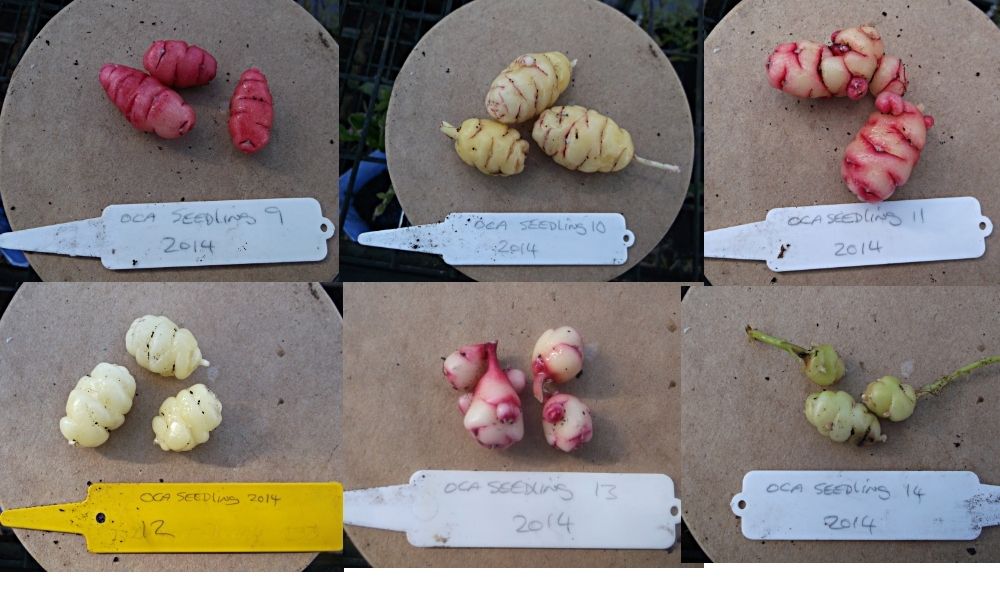  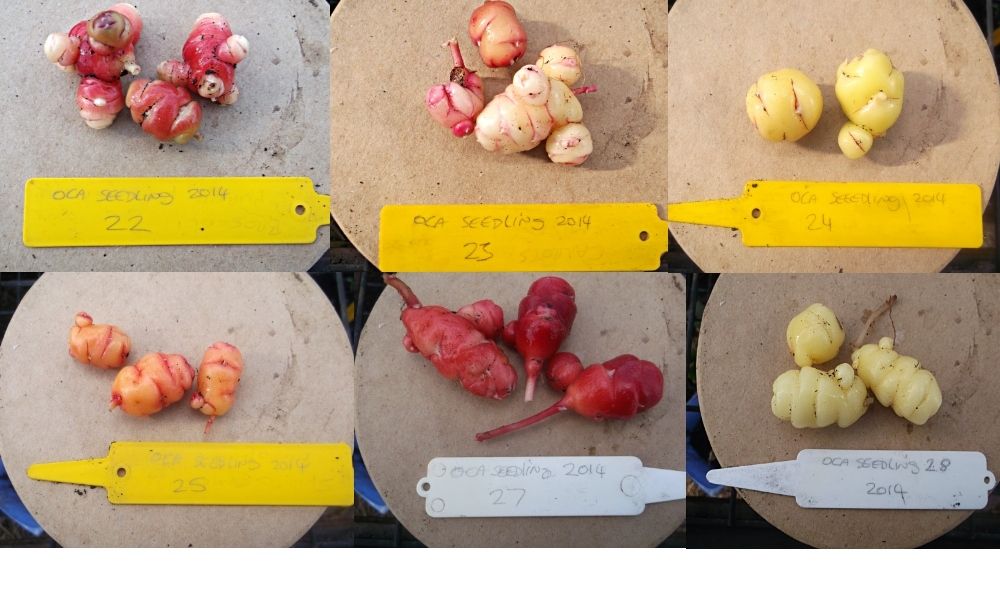 Interestingly, the large plant I showed you in my last post produced almost a kg of tubers and the tubers still had a lot of growing to do so I am waiting eagerly till next year to see how it does. All of these tubers would have been bigger if I had left the plants a bit longer but I didn't need to at this stage and was very curious to see how they produced. I left one tuber of each to taste in a week or so when they sweeten. |
|
|
|
Post by Joseph Lofthouse on May 27, 2015 23:37:38 GMT -5
|
|
|
|
Post by steev on May 28, 2015 2:07:08 GMT -5
I think 9, 10, 25, and 27 are especially attractive; eagerly awaiting reports on taste.
|
|
|
|
Post by billw on May 28, 2015 9:31:10 GMT -5
Looks like a great selection to me! Did any of them flower?
My best yields out of about 700 seedlings have just topped 1kg, so you're doing very well to have one that produces that much.
|
|
|
|
Post by rowan on May 28, 2015 14:44:45 GMT -5
Yes Bill, two did flower and I followed your advice to take cuttings and put them in water. They seemed to produce seed pods but I think I fumbled it and they didn't produce seed even though they looked right - filled out and lifted themselves upright when they seemed ripe. Next year I will do that part better.
BTW, I am pleased to see that the cuttings that I left in the water produced tubers without any stem rot so I am going to try growing a couple in a hydroponic type of set up next season for an experiment.
|
|
|
|
Post by luisport on May 29, 2015 16:46:13 GMT -5
Today i use the ulluco leaves in soup and i like it a lot!
|
|
|
|
Post by billw on May 29, 2015 19:23:48 GMT -5
Rowan - I think the hydroponic idea could be very interesting. I've also observed nice clean tubers forming in water. You could produce a great looking crop that way if it works.
Luisport - Yeah, those ulluco leaves are tasty. I really like them in salads. Wild ulluco is good to grow as a leaf crop because the tubers are small, but the vines can be very long.
|
|
|
|
Post by billw on Jun 1, 2015 16:12:02 GMT -5
Oca is moving a little slowly this year. I'm just starting to see some flower buds. Last year, I had a couple of varieties flowering by now. Other plants are taking up the slack though... The first of this year's new ullucos is flowering. I've already done some pollination between it and last year's volunteer. Any seeds would be very exciting - a second generation. 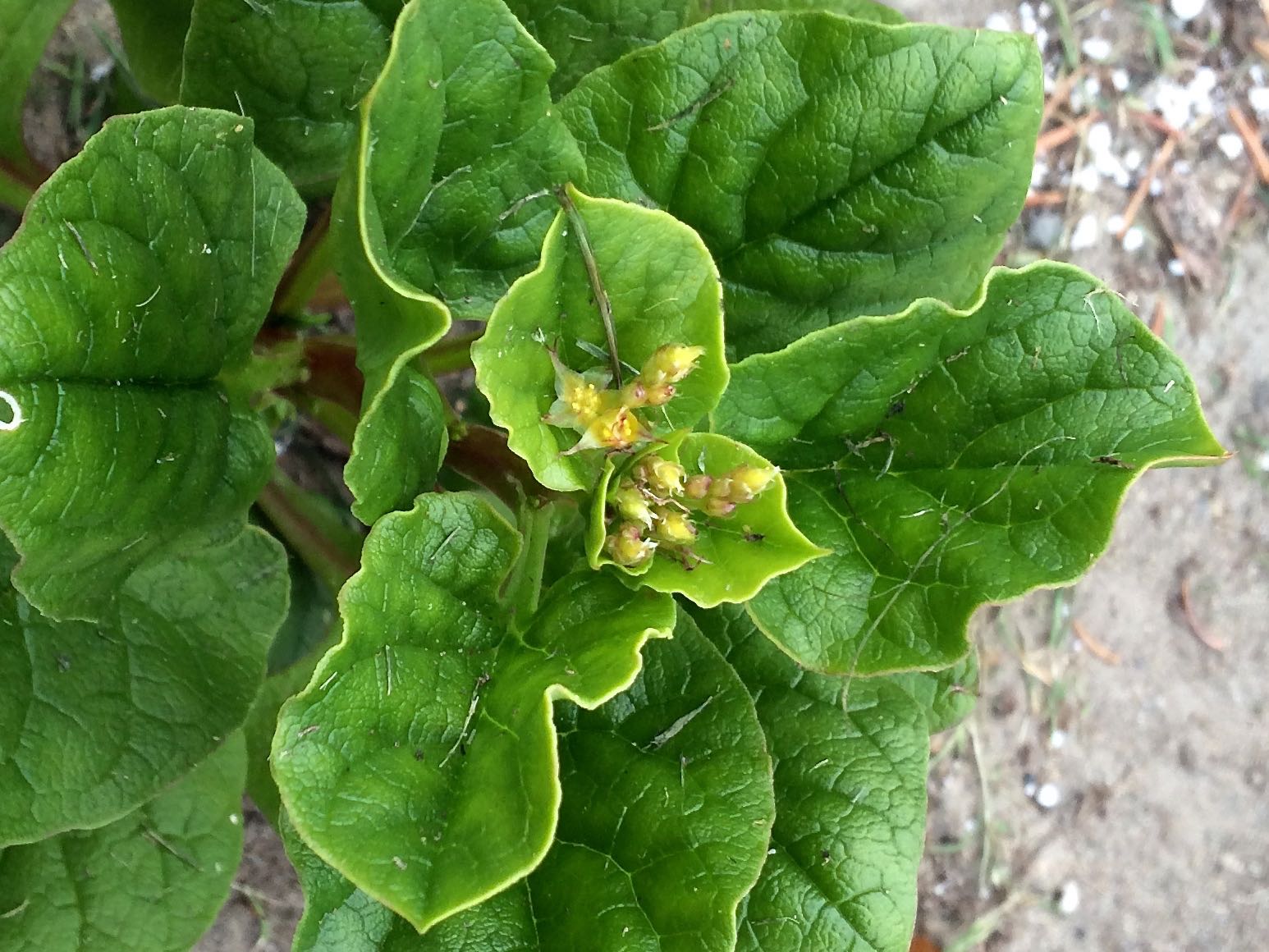 Also, one of the mashua seedlings is flowering. Ken Aslet is almost certainly one of the parents since that is the only other variety that I've ever seen flowering in spring. It also has a dark red flower, which is unusual. The variety Puca añu has a flower of that color, but every other mashua that I've seen has orange flowers. 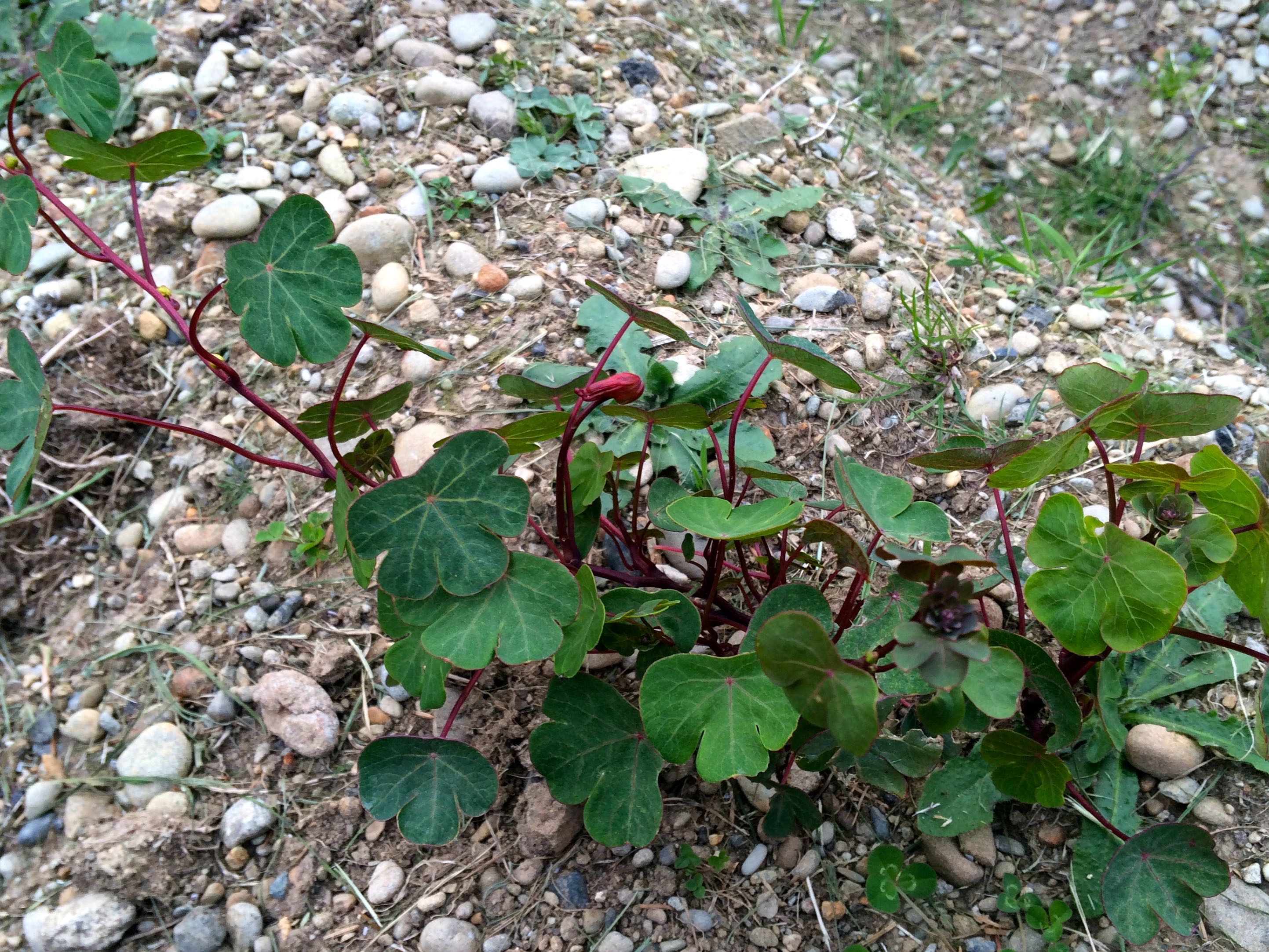 |
|
|
|
Post by luisport on Jun 2, 2015 16:09:09 GMT -5
Today i dig out my blue potato crop and eat some at lunch... they were very good! It is so good to eat our just collected potatos!
|
|
|
|
Post by steev on Jun 2, 2015 17:48:25 GMT -5
People who get their spuds from the supermarket never realize that fresh-dug spuds are like sweet corn, the longer they sit around, the more of their sugar turns to starch.
|
|
|
|
Post by luisport on Jun 3, 2015 8:55:38 GMT -5
People who get their spuds from the supermarket never realize that fresh-dug spuds are like sweet corn, the longer they sit around, the more of their sugar turns to starch. Yes it's true!  |
|
|
|
Post by billw on Jun 3, 2015 20:22:54 GMT -5
Found a volunteer seedling mashua today. 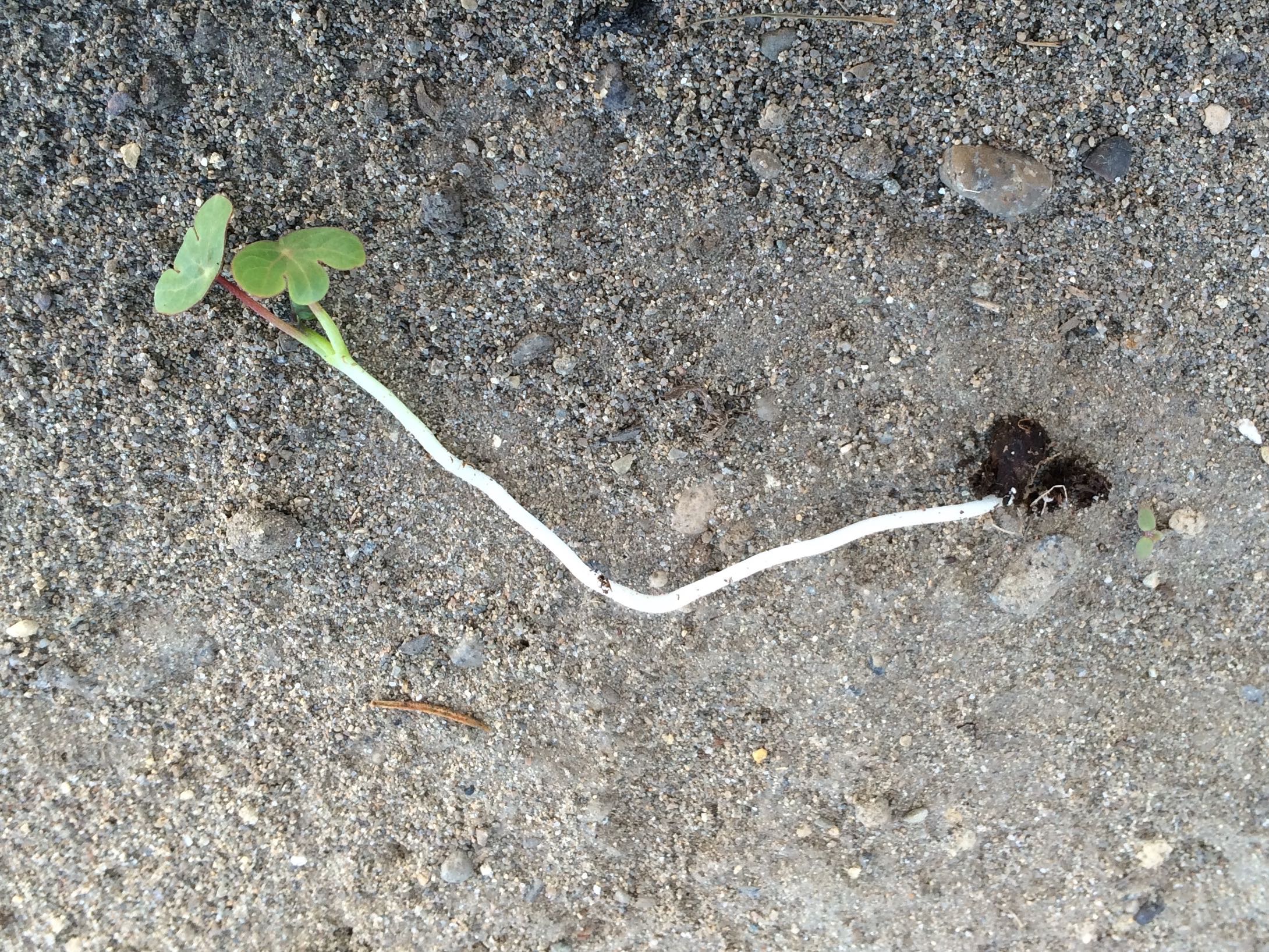 It was very deep; it had to climb about 5 inches to the surface. Also a very small seed. That is interesting because it may mean that early harvested immature seeds will germinate. Considering that they are always in a race against frost, that could be helpful. |
|
|
|
Post by billw on Jun 7, 2015 18:52:16 GMT -5
Germination of mauka seeds is surprisingly regular: 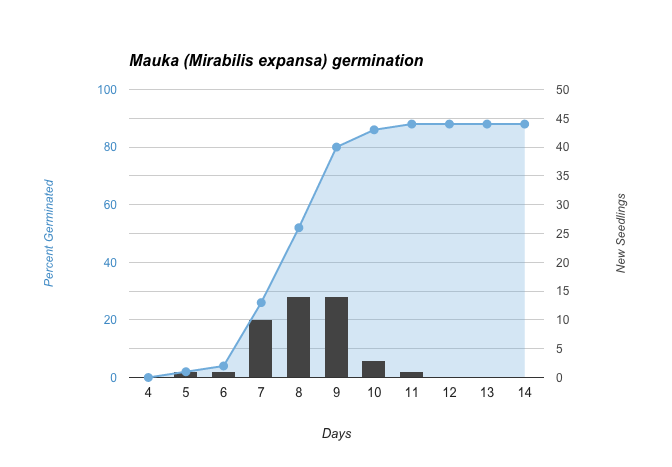 Not quite the picture that I would expect from a plant that is reportedly rarely grown from seed. This makes me wonder if mauka was commonly grown from seed at one time or still is and the information hasn't been passed along. ( More details.) |
|